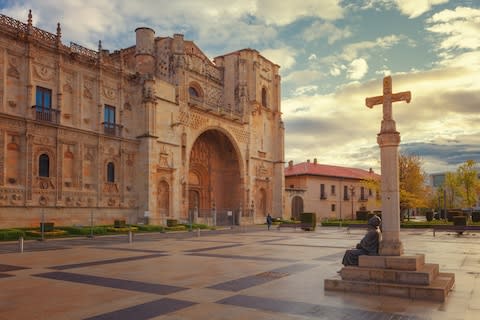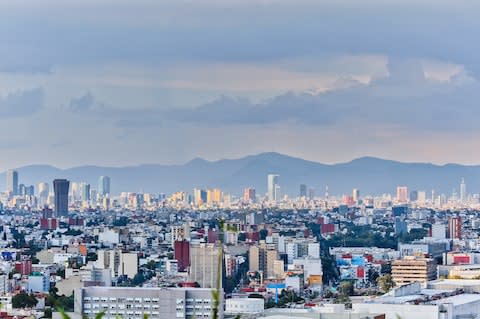Why you can never truly understand another country without learning its language

The first thing I asked for on getting ashore in Spain was a glass of red wine. I had never been to the country before and could speak not a sentence of the language, so I pieced together the request from a dictionary.
The woman behind the bar was nonplussed, since each word I’d used and the whole sentence were erroneous. So she served the next customer while I stewed in confusion. Then she explained to me that she’d done this in order to attend to me without hurry. The funny thing was that I didn’t know any of the words she used to me, yet I understood.
I got my glass of wine and have persevered in the 30 years since in my resolution to get to know another country well. The correlative of that enterprise was to rule out visiting lots of countries without bothering about the language. Not for me a beach holiday in Bali, I resolved, nor a tour of German cathedrals with the day rolling past me like a film without subtitles.
I decided to continue visiting different parts of Spain until I could understand its main language and something of its peculiar culture. There is nowhere else so near and so strange. I wouldn’t quite agree that Africa begins at the Pyrenees, but those mountains did produce something of a Lost World to be discovered. I felt an appetite to explore it that the United States did not provoke, even though I could have spoken English there.
The worst way of seeing a foreign country is as a couple in a car. You zoom along a motorway, as available, seeing a lot of embankments and talking to each other. At the hotel, you check in, talking to staff who speak Hotel English, converse with each other over dinner, say little at breakfast and then it’s back into the tin-can-for-two, motoring to the next destination.
My decision to pick up the language by immersion and travelling by public transport entailed mistakes. A small one was assuming the Spanish for “street” was “rua”. (I’d landed in Cantabria where they do say “rua”, rather than the Castilian “calle”.)
A bigger mistake was to think that the first sentences I learnt were the most important. Naturally I could soon say, “Give me drink. Give me food.” But people sell you food and drink anyway. Once, with a sense of hopelessness and depersonalisation, I sat in a cheap restaurant in León with a menu and no idea what anything was. The relief, when the waiter suggested things to try, was all the greater.

In reality, knowing the names of foodstuffs is not the obstacle, though I do remember a surreal charade of a waiter acting out the animal that “caracol” signifies. The horns confused me, until all became plain when I realised it meant “snail”. No, the bigger question is what to eat when.
It would seem odd to us if a foreign tourist chose spotted dick and custard as a starter. But it seemed pretty odd to an Englishman abroad in a café at 11am to find one table eating “ensaimadas” (a sort of bun) with coffee and another table eating tuna and raw onions with little glasses of draught beer. Simon Courtauld, the veteran Hispanophile, remembers being the only person in a station cafeteria waiting for a train before dawn who was not drinking a brandy with his coffee.
What to eat when and how form part of the unscripted everyday culture, closely aligned to language. It also includes one’s bodily attitude. Spaniards tend to look at you as they pass, in a manner we might think rudely staring. But after a few days in Plasencia or some such inland town, I find myself seeing English tourists through Spanish eyes, and their demeanour is not impressive. Instead of speaking out, engaging eye contact and saying what they want, the English (men notably) murmur, look at the ground and dither.
From the other direction, many a Briton in Spain has been shocked by a piece of Spanish convention in those busy bars with delicious tapas in the hour or so before lunch (which is, by iron law, not before 2pm). This is the throwing of rubbish on the floor. The head and legs of the prawn with your glass of wine join the little paper servilletas on the terrazzo floor, with the wooden cocktail sticks used to anchor tapas, the olive stones, the used sugar sachets and the cigarette ends (before the Spanish lost their liberty to smoke in bars and restaurants on Jan 2 2011). As the clock strikes, the tide of drinkers disappears, and someone emerges from behind the bar with a broom and sweeps it all up.
In the past few years, this convention has weakened, and bins have appeared into which some people throw odds and ends. It’s convention that matters, and convention means manners. In France, no one minds if you don’t know the word for cigarette lighter. The vital thing upon entering the shop is to say: “Bonjour, Madame.”
There can be false friends in the language of courtesy. My old friend in Soho, the stage-carpenter Mick Tobin, once had a newspaper pitch near Cambridge Circus. When tourists asked him the way to a theatre, he often replied: “It’s next to the school.”
“Which school is that?”
“The school where they teach you to say ‘please’ and ‘thank you’.”
But the English-language politeness of saying please does not transfer into Spanish. English people say “por favor” too often. In Spanish this can have the connotation of “if you please”, and sounds peremptory.
English, however, lacks the counter-thanks expressed by Spanish “de nada”, Italian “prego” or German “bitte”. Restaurant staff in Britain, generally being foreign and feeling a gap, say, “You’re welcome,” which sounds inauthentic, or follow the Antipodean route into “No problem”, which some customers find annoying, as though service was usually a problem. But in a country where such a slot exists, it is certainly worth filling it if you ever do anything that wins a native’s thanks.
With a bit of Spanish, half the Americas were open to me, too. The funniest consequence one year was to find myself isolated in Mexico City on Christmas Day. I’d carelessly assumed the wrong cultural model: it was not all fiesta and fireworks in cantinas. Like London, the whole place closed down for the day. All that could be seen in the deserted streets were policemen in dress uniform, including white gloves, directing the non-existent traffic at intersections.
I hardly spoke to anyone all day until I decided to take the Metro (open, unlike the London Underground) to the great shrine of Guadalupe and found myself picnicking with Indians in the sunshine. Some of them, like me, spoke Spanish as a second language.

My exceptions to the Learn the Language rule are single-purpose visits, to see Hagia Sophia in Trabzon, for example, or the holy grail in Bamberg. (That’s another story). To concentrate the journey into going, seeing and immediately returning is rewarding. Chit-chat comes second.
Indeed, I was delighted to find on a slow train from Cologne the last man in Germany not to speak English. He was the guard. I was on the wrong train, but didn’t mind much, as it was upstairs on a double-decker, with pleasant views of the countryside, so mysteriously lacking in cows, in the German manner. The guard then had a brain wave. He wrote down the estimated time of arrival. Figures are a universal language that works even in China, I’m told.
Otherwise, the incremental process of learning the language never ends, any more than getting to know the country, as the whole purpose of going abroad.
Christopher Howse’s latest book is Soho in the Eighties (Bloomsbury, £20).

